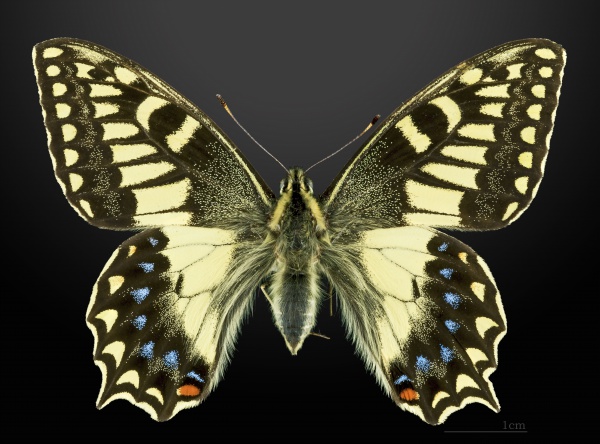Facts About Papilio hospiton
The Corsican swallowtail, scientifically known as Papilio hospiton, is a fascinating butterfly found exclusively on the Mediterranean islands of Corsica and Sardinia. This medium-sized butterfly has a wingspan ranging from 72 to 76 millimeters and exhibits striking black-and-yellow wings, accented with blue and red. Notably, both male and female Corsican swallowtails appear remarkably similar.
A key distinction between Papilio hospiton and its close relative, Papilio machaon, lies in the shape of their wings. Papilio hospiton possesses more rounded wings and features a short tooth on the hindwing instead of a tail. In terms of coloration, the Corsican swallowtail has more extensive black areas heavily sprinkled with yellow. Its caterpillars are green with black stripes and tiny yellowish-red spots, with black being more prominent than in the caterpillars of Papilio machaon. The chrysalis, or pupal stage, of Papilio hospiton is green and has more conspicuous abdominal tubercles compared to those of Papilio machaon.
This butterfly typically inhabits mountainous regions, residing at elevations between 400 and 1,500 meters above sea level on Corsica and Sardinia. Its preferred food plants belong to the Umbelliferae family, including fennel, giant fennel, Corsican rue, and Peucedanum paniculatum, although some of these preferences are still under debate.
Papilio hospiton produces two broods, one in May and another in August. However, the species faces several threats that endanger its survival, such as habitat destruction, loss of food plants, and overcollecting. Protecting this unique butterfly is essential to preserving its role in the Mediterranean ecosystem.

 San Marino
San Marino